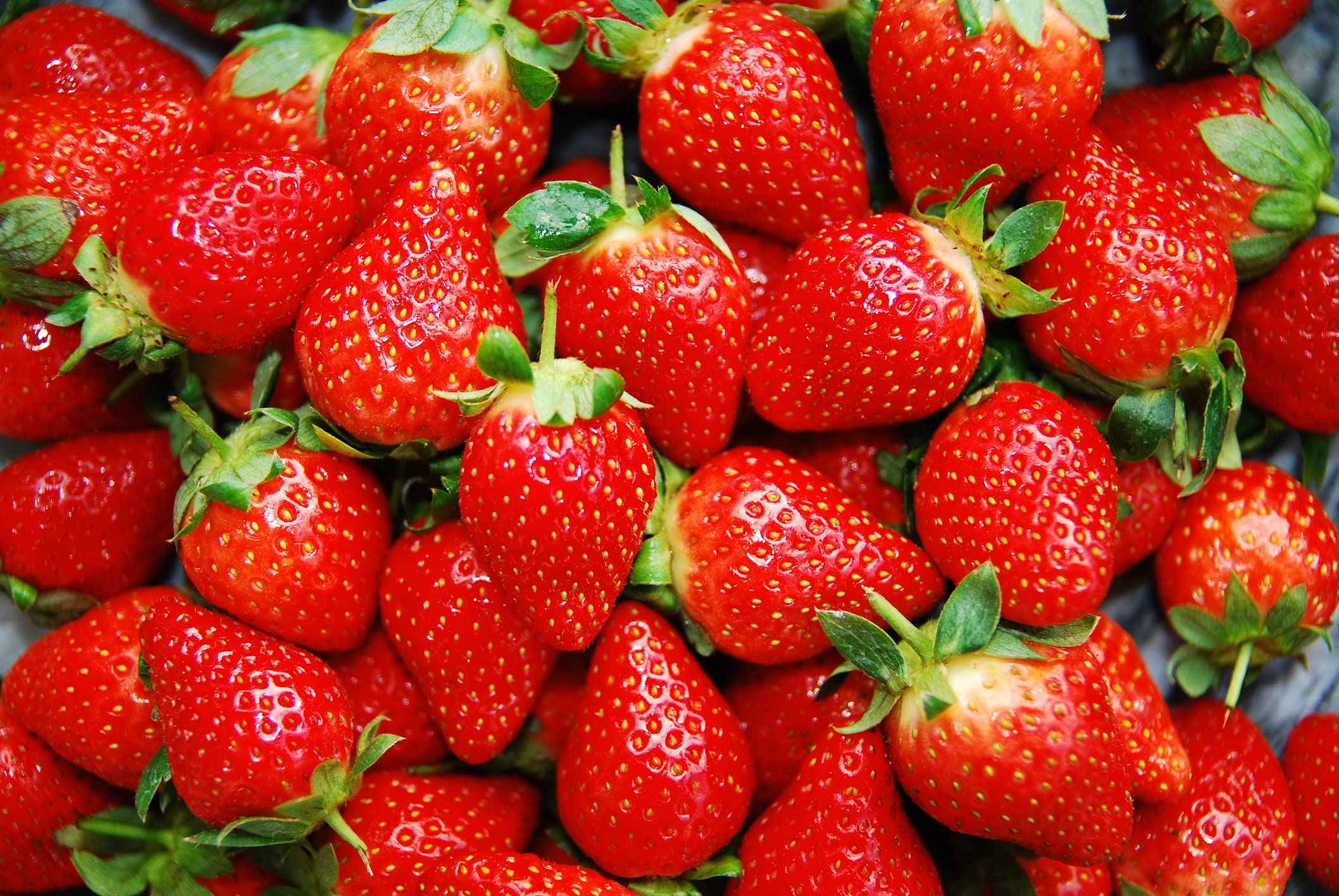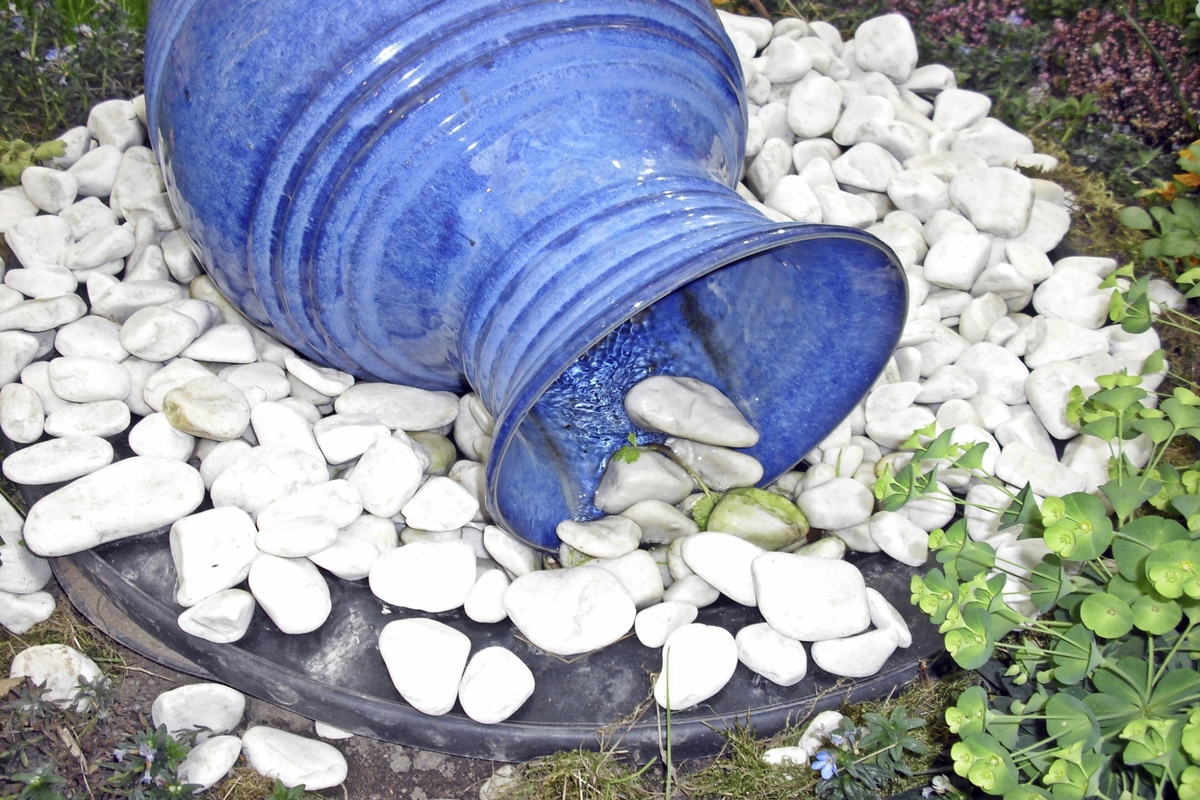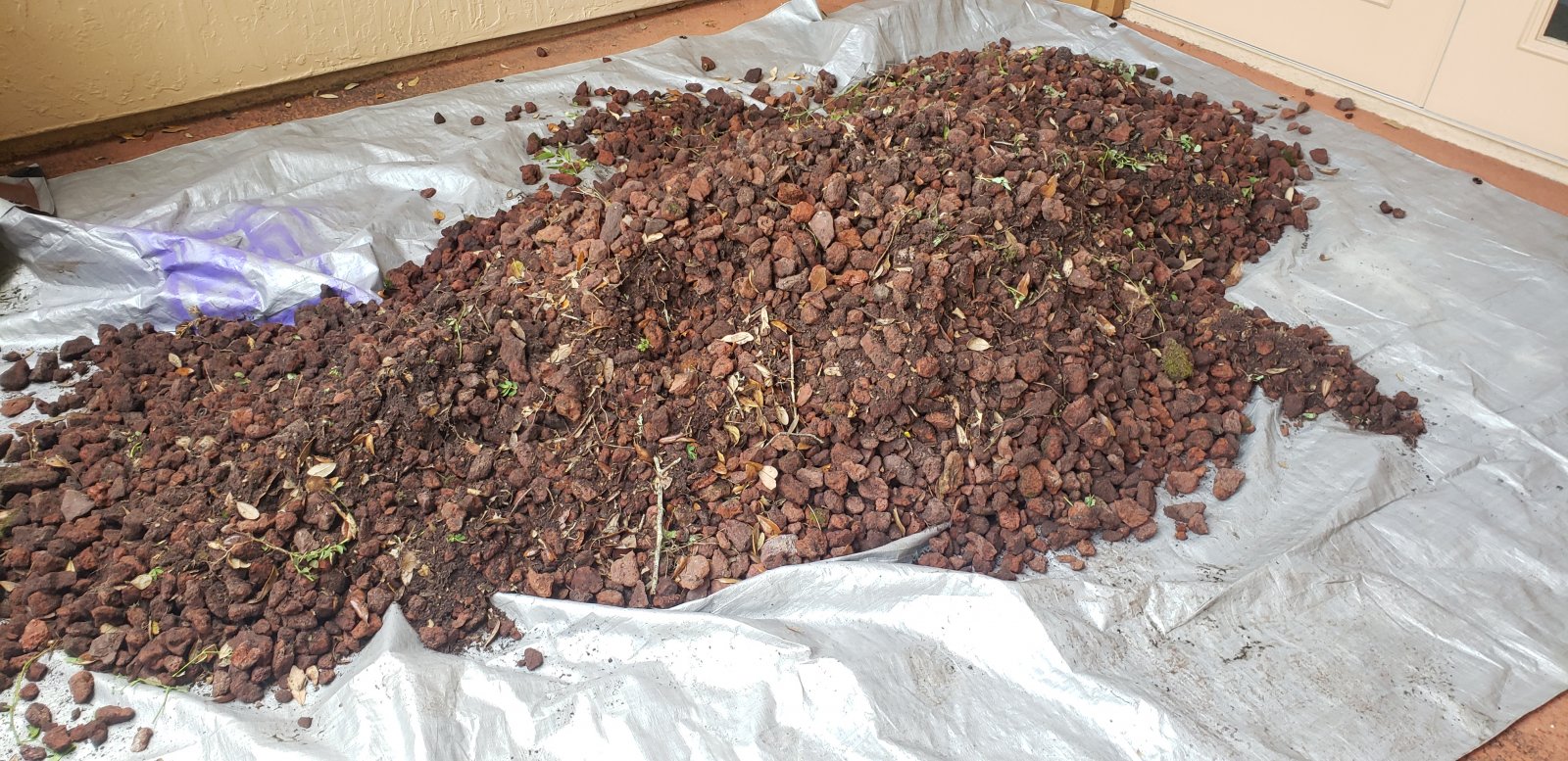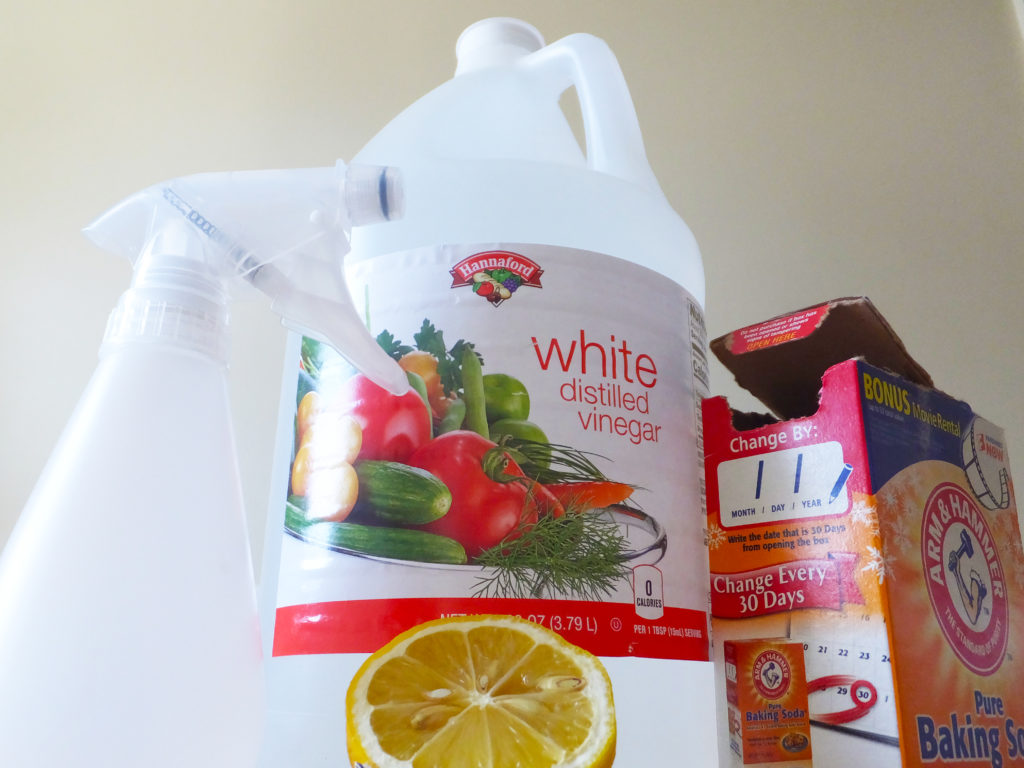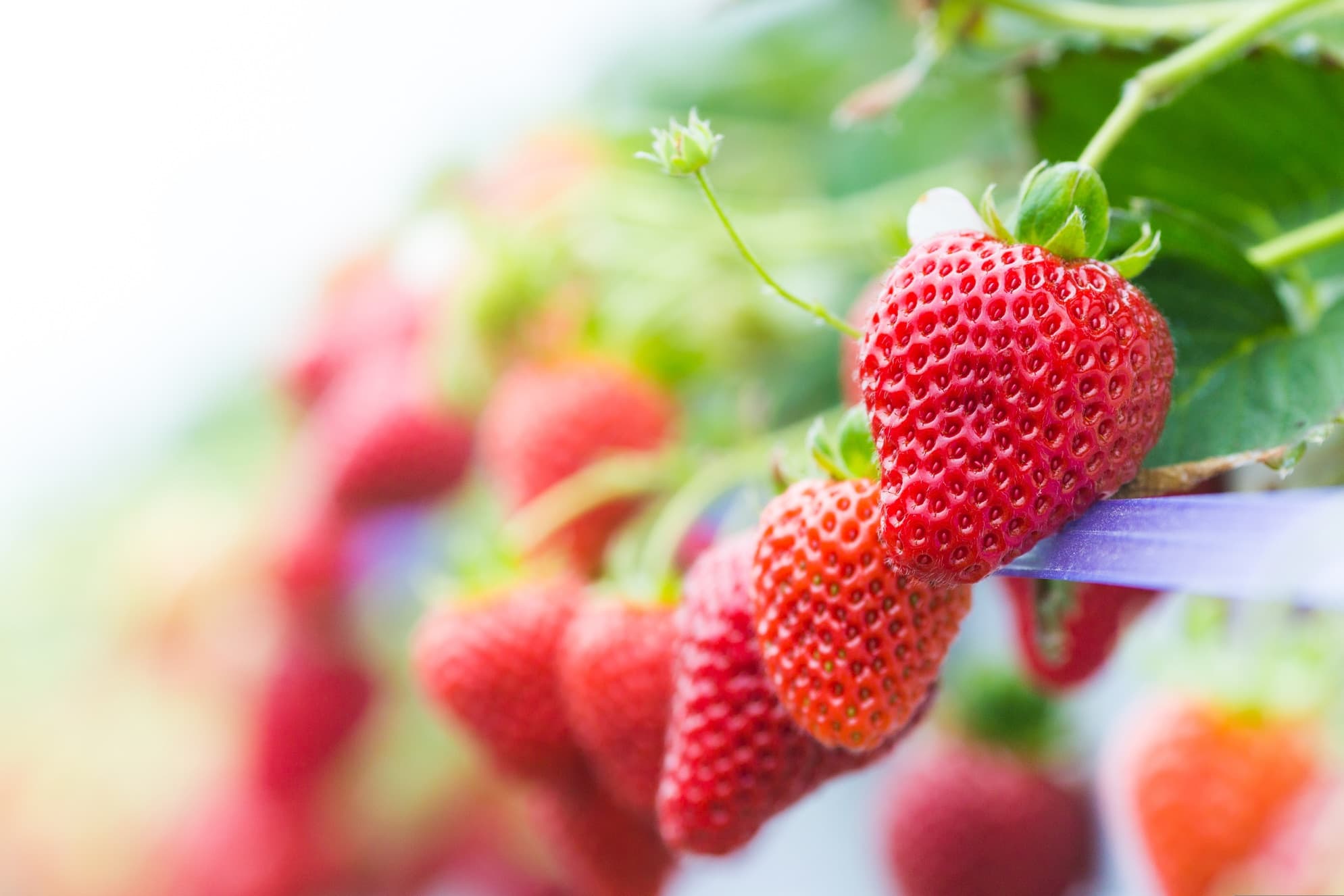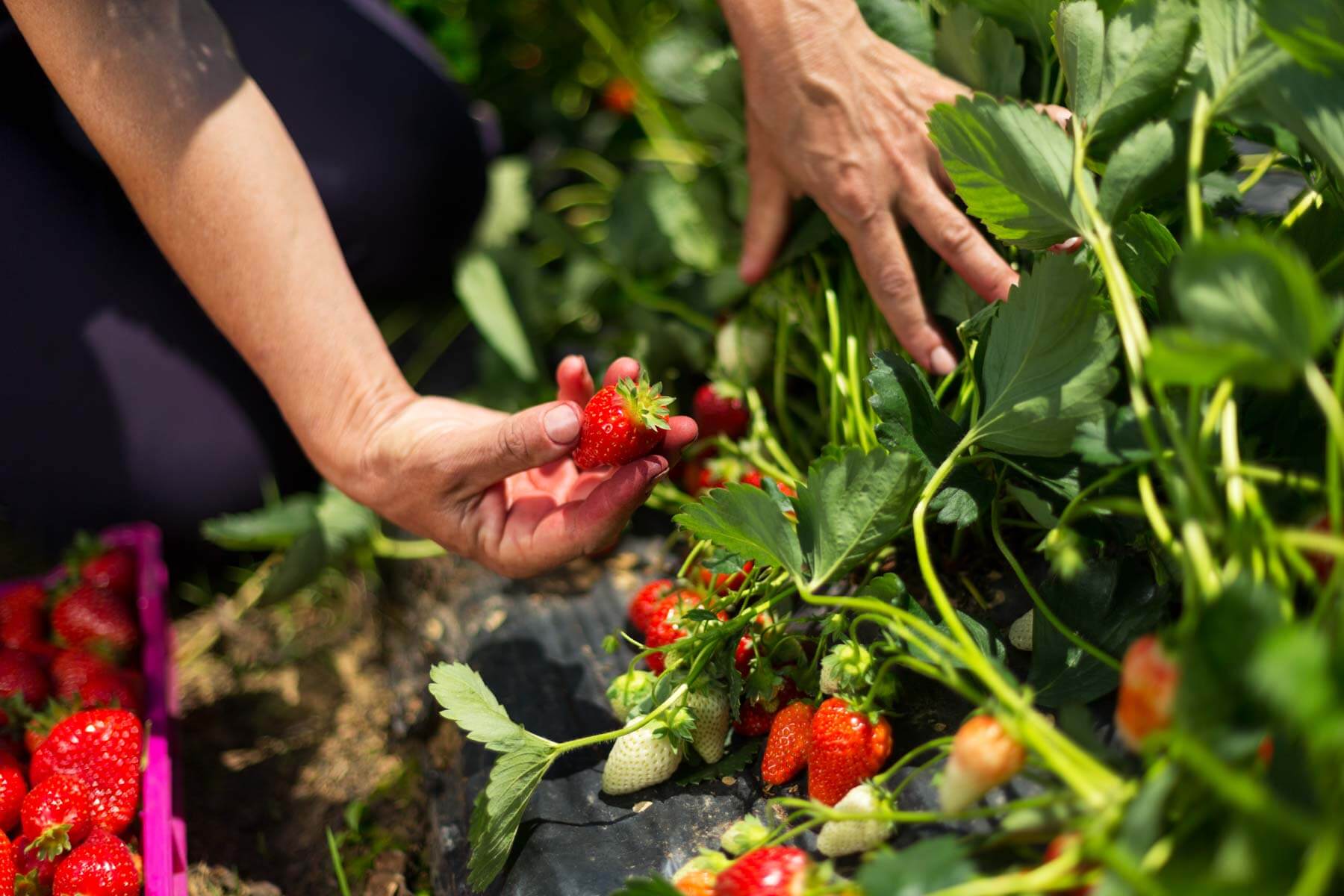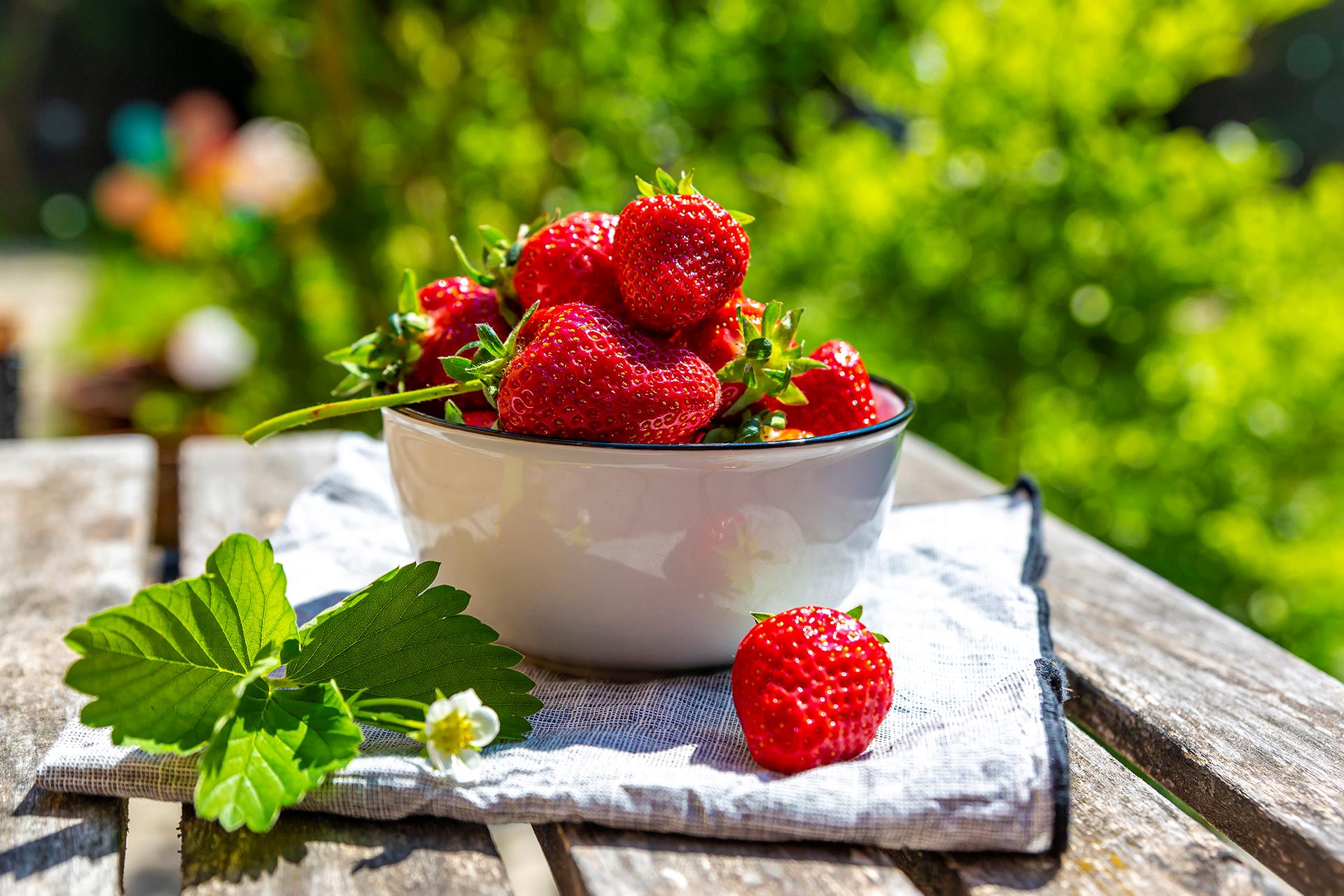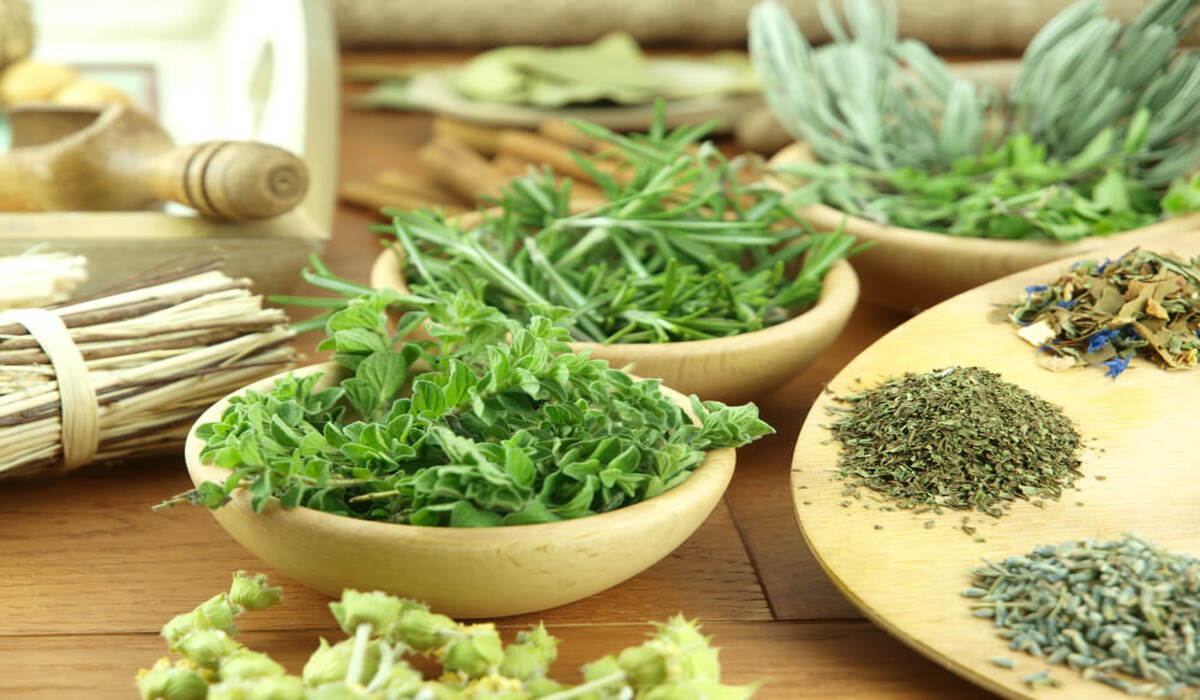Home>Gardening News and Trends>Latest News>How To Clean Pesticides Off Of Strawberries
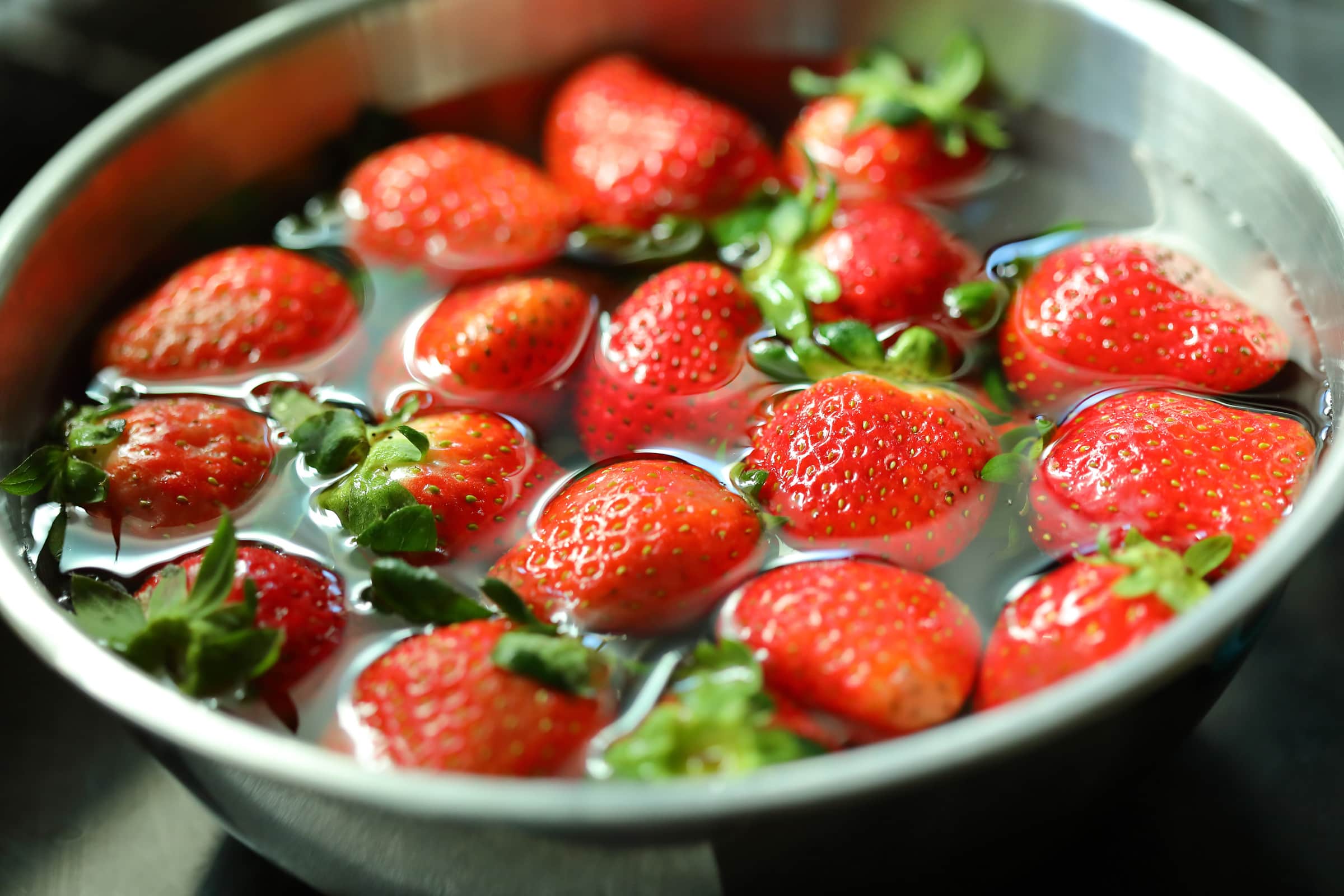

Latest News
How To Clean Pesticides Off Of Strawberries
Modified: January 22, 2024
Learn the latest news on how to clean pesticides off of strawberries. Discover effective methods to ensure your strawberries are safe and healthy for consumption.
(Many of the links in this article redirect to a specific reviewed product. Your purchase of these products through affiliate links helps to generate commission for Chicagolandgardening.com, at no extra cost. Learn more)
Table of Contents
- Introduction
- Understanding the Need to Clean Pesticides off Strawberries
- Safety Precautions and Requirements
- Methods for Cleaning Pesticides off Strawberries
- Method 1: Wash with Water
- Method 2: Soak in Vinegar Solution
- Method 3: Use Baking Soda
- Method 4: Pesticide Removal with Saltwater
- Method 5: Use Commercial Fruit and Vegetable Wash
- Tips and Recommendations for Effective Cleaning
- Conclusion
Introduction
Strawberries are a delicious and nutritious fruit that many people enjoy. However, it is important to be aware of the potential presence of pesticides on their surface. Pesticides are chemicals used in agriculture to protect crops from pests and diseases. While they play a crucial role in ensuring abundant harvests, they can also pose a risk to human health if consumed in high amounts.
Understanding the need to clean pesticides off strawberries is essential to minimize potential health risks. Pesticide residues can be found on the surface of strawberries due to conventional farming practices, making it important for consumers to take precautions and remove these residues before consuming the fruit.
When it comes to cleaning strawberries, using solely water or brushing may not be enough to effectively remove pesticide residues. This is because some pesticides are designed to be water-resistant, which makes them adhere to the fruit’s surface tightly. Therefore, it is vital to employ proper cleaning methods to ensure a thorough removal of pesticides.
This article will guide you through various methods for cleaning pesticides off strawberries, providing you with easy and effective solutions to safeguard your health. By incorporating these cleaning practices into your routine, you can enjoy strawberries with peace of mind, knowing they are free from harmful pesticide residues.
Understanding the Need to Clean Pesticides off Strawberries
Strawberries are a popular fruit enjoyed by people of all ages. However, it is important to be aware of the potential risks associated with pesticide residues that may be present on their surface. Pesticides are chemicals used in conventional farming to protect crops from pests, insects, and diseases. While they serve an important purpose in ensuring crop productivity, they can also pose health risks if consumed in excessive amounts.
Studies have shown that strawberries, along with other fruits and vegetables, may contain pesticide residues even after they have been harvested. These residues can come from the application of pesticides during the growing process. Pesticides can seep into the soil or be absorbed by the plant, ultimately ending up on the surface of the fruit.
Consuming fruits and vegetables with pesticide residues can potentially have adverse effects on human health. Prolonged exposure to pesticides has been linked to various health issues, including organ damage, developmental problems, hormone disruption, and increased risk of certain types of cancer. These risks are particularly concerning for children, pregnant women, and individuals with compromised immune systems.
While regulations and safety standards are in place to regulate pesticide use, it is still crucial to take steps to reduce exposure to these chemicals. Washing strawberries thoroughly is a simple yet effective way to remove pesticide residues from their surface. By doing so, you can minimize the potential risk of ingesting harmful chemicals and ensure the safety of the fruit.
It is worth noting that organic strawberries, which are grown without the use of synthetic pesticides, may have lower levels of pesticide residues compared to conventionally grown strawberries. However, even organic produce can still be exposed to natural pesticides or have residues from environmental factors, making it important to clean them before consumption.
In the following sections, we will discuss various methods for cleaning pesticides off strawberries, providing you with practical tips and recommendations to ensure that your strawberries are safe and pesticide-free.
Safety Precautions and Requirements
Before diving into the methods of cleaning pesticides off strawberries, it is important to be aware of some safety precautions and requirements. By following these guidelines, you can ensure the effectiveness of the cleaning process and prioritize your well-being.
First and foremost, always wash your hands thoroughly with soap and water before handling strawberries. This helps to remove any potential contaminants on your hands and prevents the transfer of dirt, bacteria, or other harmful substances to the fruit.
Additionally, it is essential to choose fresh and ripe strawberries for cleaning. Look for strawberries that are firm, plump, and vibrant in color. Avoid strawberries that have mold, bruises, or appear wilted, as they may already be compromised and could harbor more pesticide residues.
When purchasing strawberries, consider opting for organic varieties whenever possible. Organic strawberries are grown without the use of synthetic pesticides, reducing the risk of pesticide residues. However, even organic strawberries should be cleaned before consumption, as they may come into contact with environmental contaminants.
To further ensure safety, do not use any cleaning solutions or methods not specifically recommended for food. Household cleaners, detergents, or soaps should not be used to clean fruits and vegetables as they can leave behind residues that may be harmful if ingested. Stick to the methods we will discuss in the upcoming sections, as they are specifically designed for cleaning fruits and vegetables.
Lastly, be mindful of any allergies or sensitivities you may have. Some individuals may have allergic reactions to certain cleaning agents or natural products. If you have known allergies or concerns, it is best to consult with a healthcare professional before using any cleaning methods that may involve potential allergens.
By adhering to these safety precautions and requirements, you can ensure that the cleaning process is both effective and safe for consumption. Now that we have covered the necessary safety measures, let’s explore the various methods for cleaning pesticides off strawberries in the next sections.
Methods for Cleaning Pesticides off Strawberries
When it comes to cleaning pesticides off strawberries, there are several effective methods you can use. These methods are simple, affordable, and can be easily incorporated into your routine. Let’s explore the different approaches:
-
Method 1: Wash with Water
The simplest method for cleaning strawberries is to wash them with water. Start by placing the strawberries in a colander or strainer under running water. Gently rub each strawberry with your fingers while rinsing to remove any visible dirt or debris. Continue rinsing until the water runs clear.
This method can help remove some pesticide residues, but it may not be as effective for pesticides that are resistant to water. Therefore, it is recommended to use additional cleaning methods for a more thorough removal of pesticides.
-
Method 2: Soak in Vinegar Solution
Another effective method is to soak the strawberries in a vinegar solution. Create a mixture of 1 part white vinegar and 3 parts water in a bowl or basin. Place the strawberries in the solution and let them soak for 15-20 minutes. Afterwards, rinse them under running water to remove any vinegar taste.
The acidity of the vinegar helps to break down and remove pesticide residues from the surface of the strawberries. This method is particularly effective for removing wax coatings and certain types of pesticides.
-
Method 3: Use Baking Soda
Baking soda can be used as a natural cleaning agent for strawberries. Create a solution by mixing 1 teaspoon of baking soda with 2 cups of water. Stir well until the baking soda is fully dissolved. Submerge the strawberries in the solution for a couple of minutes, then rinse them under running water.
Baking soda helps to remove pesticide residues and any wax coatings on the strawberries. It also acts as a natural disinfectant against bacteria and other contaminants.
-
Method 4: Pesticide Removal with Saltwater
Saltwater is another effective method for removing pesticides from strawberries. Fill a bowl or basin with 4 cups of water and add 1 teaspoon of salt. Stir until the salt is dissolved, then place the strawberries in the solution. Allow them to soak for 5-10 minutes before rinsing under running water.
The saltwater solution helps to draw out pesticide residues from the strawberries and promotes their removal. This method can be used as an alternative if vinegar or baking soda is not available.
-
Method 5: Use Commercial Fruit and Vegetable Wash
If you prefer a ready-made solution, commercial fruit and vegetable washes are available in the market. These products are specifically designed to remove pesticide residues and other contaminants from fruits and vegetables.
Follow the instructions on the product label for the appropriate usage. Generally, you will need to dilute the wash in water, soak the strawberries for the recommended time, and rinse them thoroughly afterwards.
It is important to note that no single method can guarantee the complete removal of all pesticide residues. However, by combining these cleaning methods or using them alternatively, you can maximize the effectiveness of pesticide removal and reduce exposure to harmful chemicals.
In the following sections, we will provide some additional tips and recommendations to ensure the cleaning process is as efficient as possible.
Method 1: Wash with Water
One of the simplest and most accessible methods for cleaning strawberries is to wash them with water. While this method may not completely remove all pesticide residues, it can still help reduce their presence on the fruit’s surface.
To begin, place the strawberries in a colander or strainer and hold them under gently running water. Allow the water to flow over the strawberries as you rub them lightly with your fingers. This helps to dislodge any visible dirt, debris, or surface pesticides.
Continue rinsing the strawberries for at least 30 seconds or until the water runs clear. By rinsing them for a sufficient amount of time, you can effectively remove any loose residues that may be present. If you have a large batch of strawberries, you may need to rinse them in smaller batches to ensure thorough cleaning.
After rinsing, carefully inspect the strawberries for any remaining debris or organic materials. If you notice any, gently remove them using your fingers or a soft brush.
While washing with water is a simple and convenient method, it may not be as effective for removing pesticides that are resistant to water or have become deeply embedded in the strawberries’ pores. Therefore, consider using additional cleaning methods to further reduce pesticide residues.
Keep in mind that it is best to wash strawberries right before consuming them to maintain their freshness. Washing them too far in advance can cause you to lose some flavor and texture.
Now that you are familiar with the first method of cleaning strawberries, let’s move on to the next method: soaking in a vinegar solution.
Method 2: Soak in Vinegar Solution
Soaking strawberries in a vinegar solution is a highly effective method for removing pesticide residues from the fruit’s surface. Vinegar, with its mild acidity, acts as a natural cleanser and helps break down the pesticides.
To use this method, start by creating a vinegar solution by mixing 1 part white vinegar with 3 parts water. Pour the solution into a bowl or basin, making sure the volume is sufficient to cover the strawberries.
Place the strawberries in the solution and let them soak for 15-20 minutes. This soaking period allows the vinegar solution to penetrate the surface and dissolve any pesticide residues clinging to the strawberries.
After the soaking time is up, remove the strawberries from the solution and rinse them thoroughly under running water. Make sure to rinse them well, so no vinegar taste remains on the strawberries.
By soaking the strawberries in the vinegar solution, you can effectively reduce the levels of pesticide residues present on the fruit. The acidic nature of the vinegar helps break down any waxy coatings or pesticide substances adhering to the strawberries’ surface, ensuring a safer eating experience.
It’s important to note that while vinegar is an effective cleaning agent, using too high a concentration can alter the flavor or texture of the strawberries. Therefore, it is crucial to stick to the recommended vinegar-to-water ratio and to rinse the strawberries thoroughly after soaking.
Now that you have learned about the second method of cleaning strawberries, let’s explore another technique: using baking soda.
Method 3: Use Baking Soda
Baking soda is a versatile and natural cleaning agent that can be used to effectively remove pesticide residues from strawberries. It not only helps eliminate the pesticides but also acts as a gentle exfoliator, removing any wax coatings on the fruit’s surface.
To use baking soda as a cleaning method, create a solution by mixing 1 teaspoon of baking soda with 2 cups of water. Stir well until the baking soda is fully dissolved in the water.
Next, place the strawberries in the baking soda solution and let them soak for a couple of minutes. The baking soda will help break down any pesticide residues and remove the waxy layers that may be present.
After the soaking time, remove the strawberries from the solution and rinse them thoroughly under running water. Gently rub each strawberry with your fingers during rinsing to ensure complete removal of the baking soda and any remaining pesticide residues.
Baking soda is a safe and natural cleaning alternative. It effectively removes pesticide residues while being gentle on the strawberries, preserving their flavor and quality.
It’s important to note that while baking soda can help remove pesticides and wax coatings, it may not be as effective for certain types of pesticide residues. Therefore, if you prefer a more thorough cleaning method or if the strawberries have been exposed to a higher pesticide load, you may want to consider using other cleaning techniques in addition to baking soda.
Now that you have learned about the benefits of using baking soda, let’s move on to the next cleaning method: using saltwater.
Method 4: Pesticide Removal with Saltwater
Another effective method for removing pesticide residues from strawberries is using a saltwater solution. Saltwater can help draw out pesticides from the fruit’s surface and promote their removal, ensuring cleaner and safer strawberries for consumption.
To use this method, begin by filling a bowl or basin with 4 cups of water. Add approximately 1 teaspoon of salt to the water and stir until the salt is fully dissolved.
Once the saltwater solution is ready, place the strawberries in the bowl and allow them to soak for about 5-10 minutes. During this time, the saltwater works to loosen and detach any pesticide residues clinging to the strawberries.
After the soaking period, remove the strawberries from the solution and rinse them thoroughly under running water. Gently rub each strawberry with your fingers to ensure that all saltwater and any remaining pesticide residues are washed away.
Using saltwater to clean strawberries offers a simple and affordable solution. The salt acts as an abrasive agent, helping to dislodge the pesticide residues and improve the overall cleanliness of the fruit.
While saltwater can be effective in reducing pesticide residues, it may not completely eliminate all contaminants. Therefore, for a more comprehensive cleaning approach, consider combining this method with others, such as the vinegar or baking soda methods previously mentioned.
Now that you are familiar with using saltwater to remove pesticides from strawberries, let’s explore the final method: using a commercial fruit and vegetable wash.
Method 5: Use Commercial Fruit and Vegetable Wash
If you prefer a convenient and ready-to-use solution for cleaning pesticide residues off strawberries, commercial fruit and vegetable washes are available in the market. These products are specifically designed to remove pesticide residues, dirt, wax coatings, and other contaminants from fruits and vegetables.
When using a commercial fruit and vegetable wash, it is essential to carefully follow the instructions provided on the product label. While the specific usage may vary depending on the brand and formulation, the general steps typically involve diluting the wash in water and soaking the strawberries for the recommended duration.
After soaking, thoroughly rinse the strawberries under running water to remove any remaining cleaning solution, residue, or pesticide traces.
Commercial fruit and vegetable washes often contain natural ingredients such as citric acid or plant-based enzymes that help break down pesticide residues and other contaminants. They are easy to use and can provide an added layer of confidence in ensuring the cleanliness of your strawberries.
However, it is worth noting that while commercial washes can be effective, there is a wide range of options available with varying formulations. It is important to choose a reputable brand and product that is specifically labeled for fruit and vegetable cleaning.
Additionally, if you have any concerns or allergies, it is recommended to review the ingredients list or consult with a healthcare professional before using a commercial product.
Using a commercial fruit and vegetable wash can offer convenience and peace of mind in effectively cleaning strawberries and reducing pesticide residues.
Now that you have learned about the various methods for cleaning pesticides off strawberries, as well as additional tips and precautions, you are equipped with the knowledge to enjoy safer and cleaner strawberries.
Tips and Recommendations for Effective Cleaning
While the methods mentioned earlier are effective in cleaning pesticides off strawberries, incorporating these additional tips and recommendations can further enhance the cleaning process:
-
Prefer Organic Strawberries: Opt for organic strawberries whenever possible. Organic strawberries are grown without the use of synthetic pesticides, reducing the potential for pesticide residues.
-
Wash Immediately Before Consumption: It is best to wash strawberries right before consuming them to maintain their freshness and minimize the risk of recontamination.
-
Gently Rub the Strawberries: While rinsing strawberries, gently rub them with your fingers or a soft brush to effectively remove any surface pesticide residues and dirt particles.
-
Rinse Thoroughly: Ensure that you rinse the strawberries thoroughly under running water to remove any cleaning solutions, pesticide residues, or debris.
-
Use Clean Water: Make sure to use clean, preferably filtered, water for rinsing strawberries to avoid adding any additional contaminants.
-
Discard Damaged Strawberries: Remove any strawberries that show signs of mold, bruising, or spoilage as they may have higher pesticide concentrations or harbor harmful bacteria.
-
Store Properly: Store cleaned strawberries in the refrigerator to maintain their freshness and quality. Eat them within a few days for the best taste and texture.
-
Consider Peeling: If you are still concerned about pesticide residues, you may choose to peel the strawberries. However, keep in mind that some nutrients are concentrated in the skin.
By following these tips, you can ensure a more effective cleaning process and reduce your exposure to pesticide residues. Enjoy your delicious strawberries with peace of mind, knowing that you have taken the necessary steps to remove potential contaminants.
Remember, while cleaning methods can help minimize pesticide residues, it is important to support sustainable farming practices and advocate for stronger regulations to reduce the use of pesticides in agriculture.
Now that you are equipped with the knowledge and methods for cleaning pesticides off strawberries, you can confidently enjoy this delicious fruit while prioritizing your health and well-being.
Conclusion
Keeping in mind the potential presence of pesticide residues on strawberries, it is important to prioritize proper cleaning methods to ensure safer consumption. The methods outlined in this article, such as washing with water, soaking in vinegar solution, using baking soda, employing saltwater, and utilizing commercial fruit and vegetable washes, can effectively reduce pesticide residues and promote cleaner strawberries.
Remember to follow the safety precautions and requirements, including washing your hands before handling the strawberries, choosing fresh and ripe fruits, and avoiding the use of harsh chemicals or household cleaners. These precautions help maintain the integrity of the cleaning process and ensure the safety of the strawberries.
Additionally, incorporating tips such as purchasing organic strawberries, rinsing thoroughly, gently rubbing the strawberries, and properly storing them can further enhance the effectiveness of the cleaning process and maintain the quality and freshness of the fruit.
While these methods can help reduce pesticide residues, it is important to acknowledge the need for sustainable farming practices and advocating for stricter regulations on pesticide use. Supporting organic farming and local produce can contribute to a healthier food system and a reduced reliance on pesticides.
By being aware of potential pesticide residues and implementing proper cleaning methods, you can enjoy strawberries with peace of mind. Remember, though, that it is always wise to consult with healthcare professionals or refer to specific guidelines if you have allergies, sensitivities, or unique health concerns.
Now that you are equipped with valuable knowledge on cleaning pesticides off strawberries, take the necessary steps to prioritize your health and well-being. Incorporate these cleaning methods into your routine to savor the delicious and nutritious strawberries while minimizing potential risks associated with pesticide residues.
